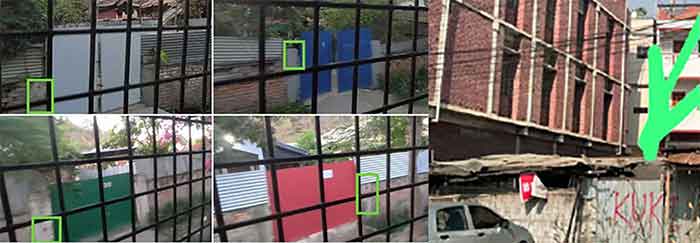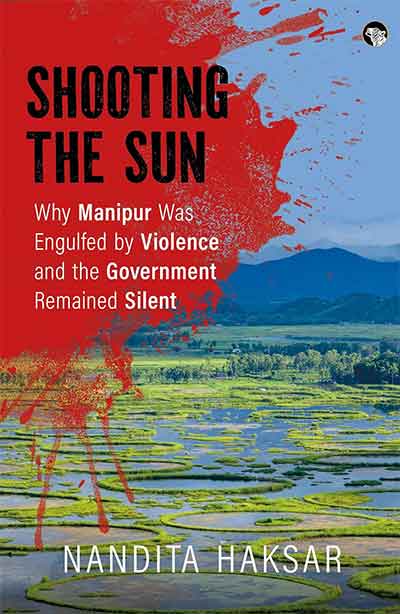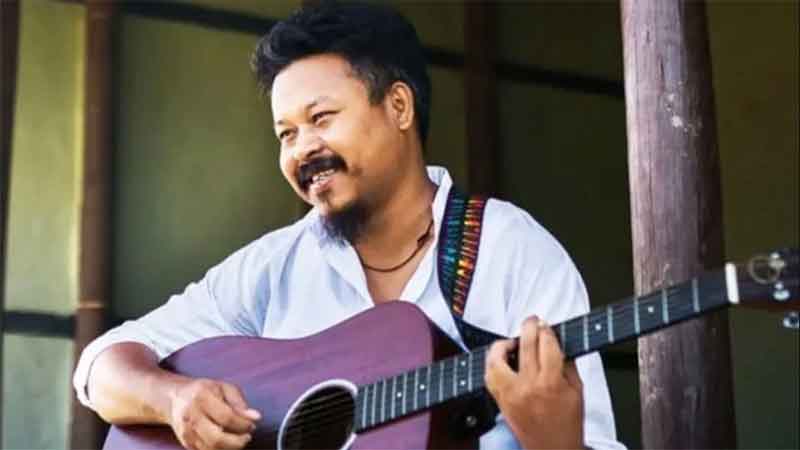“We are afraid to open our mouths. There is nothing we can do for ourselves. It is those outside the state who must speak up for us,” a Christian academician and scholar based in Churchandpur, Manipur, told this author under conditions of anonymity; that’s the level of fear among the Kuki-Zo in the state.
”It’s not just the Meitei extremist organizations in the valley who are leading and perpetrating the violence, the state machinery is also involved,” he laments, adding “After the Supreme Court refused to send the Army to protect Kuki-Zo, armored vehicles have now arrived for the state forces. This is ominous for the tribals.”
The academician’s fears are rooted in having witnessed Meitei extremist groups indulging in the violence with help from state police and commandos, also reported by Human Rights Watch.
“After helping burn Kuki-Zo villages, officers of the forces are also telling the Meiteis involved precisely what to tell the media,” says the academician while explaining how suspension of internet services, except for sections of a pliant Valley based media, has been used to distort the reality of the violence by peddling the government’s unbelievable version.
Participation of army officers has also been confirmed by other ground reports. The Zomi Students’ Federation, Lamka, (ZSF) too in a report titled ‘The Inevitable Split,” quoting eyewitnesses says paramilitary border security forces drawn from army units are part of the violence.
“Two Majors of the Assam Rifles, coming from the Meitei community were involved in setting Bongbal Kholen and nearby villages on fire in the Saikul area of the Kangpokpi District,” it says.
All of this has happened also in the backdrop of radicalisation and consolidation of Meitei Hindus by the Rashtriya Swayamsevak Sangh (RSS) as a ‘Hindu force’ against the ‘Christian Kuki-Zo.’ Jagdamba Mall, a RSS organiser in Nagaland for 40 years told the Indian Express “as many as 15 organizations affiliated to the Sangh have been active in Manipur, some for over three decades.” In 1995, there were merely just 600 RSS shakhas in the state, now there are over 6000. The BJP has also been courting two Meitei extremist groups – Armabai Tenggol and Meitei Leepun and now the sangh parivar is further stoking the fire, with VHP spokesperson Milind Parande claiming destruction of major temples in Tipaimuk.
In a rebuttal, Hmar Students’ Association (HSA) said, “There are 25 villages within the Tipaimuk sub-division (now Parbung sub-division) predominantly inhabited by the tribals, who are 100% Christian by faith. There is no single temple either big or small in the entire Tipaimuk sub-division.”
”We also want to clarify that there is only one Hindu temple in the entire Churchandpur town, which is standing safe and intact,” the statement said.
The violence starting May 3 has not occurred out of the blue: it has been in the making for some time and has its roots in three Bills passed in 2015, in the anti-tribal ethos and identity politics of Biren Singh and in the mismanagement of the state by Biren and his bosses in Delhi, along with a political-criminal nexus in play.
On August 25, 2015, without any discussion, using the money Bills route, the state government passed three very controversial bills: The Protection of Manipur People Bill, the Manipur Land Reforms (Seventh Amendment Bill) and the Manipur Shops and Establishment (Second Amendment). The tribals were infuriated and opposed the bills as they intrude on their constitutionally guaranteed tribal land and forest rights.
These bills were followed by Meiteis, who already enjoy benefits under Scheduled Caste (SC), Other Backward Castes (OBC) and Economically Weaker Sections (EWS) quota, and were demanding Scheduled Tribe (ST) status since 2012, reaffirming their demand with new gusto. They claim tribals occupy 90% of land in the state (90% of it is hills) though constituting only 35% of the population, while the Meiteis, who live in the fertile valley and constitute 54% of the population, occupy 10% of the land.
Meiteis also claim they were omitted from the President’s Constitution (STs) Order, 1950, but sociologist L. Lam Khan Piang, writing in the Wire says “When the first Backward Castes Commission (BCC) requested a list of tribes to be included in the Scheduled Tribes (modification) list from each state and Union Territory, Meities did not include themselves.” They chose not to be categorized as ST even as Hindu Meiteis consider tribals ‘Haomacha’ (untouchables).
Meiteis additionally complain about their decreasing population and increasing Kuki population. However, the Kuki-Zo population as a percentage of total population increased by a 1.8% from 14% in 1951 to 15.8% in 2011, while the decadal growth of Kukis is 0.9%. The Meitei population meanwhile declined from 64.29% in 1951 to 53% in 2011.
What the Meitei lobby won’t tell you is that unlike the growth of the Kuki population since 1951, as Binalakshmi Nepram, Convenor of the Northeast India Women Initiative for Peace, in an interview pointed out, the increased population of Meiteis in the valley has been engineered by migration of Meiteis from neighboring states even as there is a drop in the birth rate among them. The Kuki-Zo living in the valley are mostly those holding government jobs and students and together they are a tiny percentage of the valley’s population.
It also won’t tell you that despite the variance in size of land occupied by the two communities, valley based Meiteis corner most of the budgetary allocations and projects and enjoy benefits of development while the tribal areas remain under-developed and neglected. In the state assembly too, 40 of the 60 seats are from the Valley while tribals have only 20 seats.
“The violence is over Meiteis wanting to occupy tribal lands for their growing population, the rest of the reasons are mere excuses” asserts Ginza Vualzong, Spokesperson, Indigenous Tribal Leaders Forum (ITLF).
“Once they get the ST status, the tribal land that has illegally been denotified by the state and cleared by the eviction drive will be handed over to Meiteis through subterfuge,” he says.
Meiteis can settle in the tribal areas under license but what they want is free access to and ownership of tribal lands disallowed by law. Clearly, the valley Meiteis are facing pressures of population versus land available, while obtaining ST status enables them to occupy tribal lands also known to have rich deposits of petroleum and gas and other minerals.
Though tension between the two tribes has been going on since 2012, it started escalating in 2017 when, soon after Bharatiya Janata Party (BJP) gained power it appointed a known anti-tribal Biren Singh as Chief Minister. Indulging in majoritarian appeasement and identity politics typical of the BJP, Biren Singh immediately notified vast tribal lands as Reserved Forest, Protected Forest, Wildlife Sanctuaries, National Parks, and Wetlands bypassing Constitutional procedures, thereby surreptitiously depriving the tribals of their land rights.
At the same time, following the 2017 notification, Meiteis, who overwhelmingly voted the BJP to power, upped their political demand for ST status, adding to the tension between the two communities.
The charged atmosphere became diabolical in June 2018, when Biren Singh was hit by a drug scandal, wherein BJP leader Lukhosei Zou was apprehended with large quantities of heroin and amphetamines.
During investigation, Thounaojam Brinda, Additional Superintendent of Police, Narcotics and Drugs Wing, uncovered involvement of BJP politicians, drug lords and officials, with the Meitei run Etocha Drug Cartel operating out of the Valley.
Brinda stated in court that she was under ‘pressure’ from Biren Singh to release from custody ‘drug lord’ and BJP member Lukhosei Zou. Senior lawyer and president of the All Manipur Bar Association, H Chandrajit Sharma, too made a similar allegation in April 2019.
After allegations against him in the drug scandal surfaced, Biren immediately started the ‘War on drugs’, specifically demonizing the Kuki-Zo, calling them ‘poppy cultivators’ and ‘terrorists’, besides also labelling legitimate Kuki-Zo villages as ‘encroachments.’
Fact is, most of the poppy processing laboratories are based in the Valley, while poppy is cultivated by all tribals – not merely Kuki-Zo. Yet it is only the Kuki-Zo who is demonized by Biren Singh for his own survival and for BJP’s politics of perdition.
Later, in August 2022, the state government claimed that 38 villages in the Churachandpur-Khoupum Protected Forest were “illegal settlements” of Kuki-Zo and its residents were “illegal immigrants”.
The illegal immigrants referred to by Biren Singh are allegedly from Myanmar, but leave alone 38 villages, by no figment of any imagination could they be occupying even a single village as AFSPA has been in force in Manipur for long and only recently removed from some places in the state.
In early April 2022, using these pretexts and the three controversial laws passed in 2015, the government started a demolition and eviction drive against Kuki-Zo settlements and properties in the valley which continued well into 2023.
What set the stage for the eruption of the violence, however, is the High Court direction directing the state government on April 20, 2023 to consider within four weeks the demand of the Meiteis for ST status. Following the court directive, the All Tribal Students Union Manipur (ATSUM) called for a peaceful Solidarity March on May 3, 2023 in all the hill areas of Manipur leading to a reaction from Meiteis.
The Zomi Students Federation (ZSF) says “The Valley-based Meitei organizations reacted to this call by organizing counter-blockades in the valley areas the evening before the peaceful rally.”
The immediate spark began when some Meitei miscreants started burning the Anglo-Kuki-Zo Centenary gate near Leisang Village, Churachandpur, which is one of the most important symbols of tribal resistance against British rule.
”The radicalised Meitei mob also assaulted returning rally-goers from border areas of Churachandpur district, with Pastor Sehkhohao Kipgen beaten to death by radical Meitei groups,” says ZSF.
The smaller number of Kukis in the Valley responded with violence, more particularly in the tribal dominated Churchandpur area. Thereafter, the violence spread to various parts of the valley and in parts bordering tribal villages, with Kuki-Zo at the receiving end en masse, forcing most of them to leave the valley or get killed.
The ZSF says that the attacks were carried out principally by the BJP backed Meitei extremist group, Arambai Tenggol, openly linked to CM Biren Singh and current Rajya Sabha MP from Manipur, Leisemba Sanajaoba. Many surrendered militants are members of these outfits.
Neither was the larger mayhem random. The Christian academician, with good reason says “the violence was pre-planned in collusion with the state; many strange things were going on before that.”
Starting Dec 2022, citing improved security conditions, the Armed Forces Special Powers Act (AFSPA) in force due to insurgency in the region was lifted from Imphal, Wangoi, Leimakhong, Nambol and Moirang areas of Valley districts.
“At that time itself, when the army left, we felt something untoward was afoot, but we never suspected that it would be the carnage that we are now witnessing and there was nothing we could do about it because both the state and Union government are involved in the decisions taken by the Biren government,” says the academician.
Later, in January 2023, people claiming to be conducting a census went throughout the Valley marking tribal homes and properties with paint and numbers. Most of those premises are not standing today, nor do many of their residents live, with over 60,000 Kuki-Zos taking shelter in refugee camps run by the government and Christian institutions.
”Why were only Kuki-Zo homes and properties numbered and marked and who were these people who claimed they were doing a census when no Kuki-Zo specific census was notified?” asks Vualzong.
Statistics reveal only a fraction of Meitis in the Valley suffered the violence faced by Kuki-Zo from Meiteis and the state. The violence against Meiteis occurred mostly in the tribal dominated Churchandpur area, whereas the Kuki-Zo communities have been attacked all over the valley and in bordering hill areas of the valley.

In February 2023, citing that 10 people were killed in 2-3 years by licensed gun users, the state government also started reviewing gun licenses issued to Kuki-Zo to protect themselves from insurgents.
”The state government disarmed the tribals by not renewing their weapons licenses while it issued over 1000 new licenses to Meiteis in the valley,” says ITLF.
Thereafter, from May 3 onwards, the carnage in the state began, triggered by Meiteis. Large scale looting of weapons from police weapons depositories and stations without a shot being fired by the police in retaliation was reported from the valley. As seen on social media, various sophisticated weapons, including machine guns, rocket launchers and sniper rifles, the kind used by state forces, have been used by the miscreants.
According to Senior Supreme Court Lawyer and activist, Colin Gonzalves, who represents Manipur Tribal Forum, Delhi, over 135 people have been killed, 110 of them Kuki-Zos and 20 Meiteis, besides burning and vandalizing of over 300 churches, and vandalizing of few Hindu shrines in the valley. Meitei women are also seen in social media videos blocking supplies for the forces and Kuki-zo refugee camps, including medicines and food. Meities were affected by violence mostly around the tribal dominated Churchandpur area, while Kuki-Zos throughout the Valley faced it.
With the valley now more or less becoming Kuki-Zo free, the question being asked is whether the violence is one of demand for land belonging to tribals, or of ethnic cleansing or of communal and caste violence.
The body count, the loss of homes, properties and villages, the 60,000 Kuki refugees and the state’s involvement is heavily lopsided against the Kuki-Zo who are also called “’Haomacha”’ (untouchables) by the Meiteis. All Kuki-Zo killed are Christians as 100% of the community are Christian. Churches have overwhelmingly been targeted, with the Sarai Talet, the Meitei flag being hoisted on some of them in Bajrang Dal fashion. No Naga churches, and no homes or other properties save one home in Churchandpur were torched and not a single of the Naga tribals, who are the second largest tribal community, is reported killed.
Perhaps the conclusive answer to the questions is in the silence and inaction of the political leadership. The CM remained silent for 18 hours following the outbreak of violence. During the time, the mobs led by Arambai Tenngol organized themselves and burnt Kuki-Zo homes, churches and properties in Imphal Valley, killing many of them.
Despite the seriousness of the situation, Union Home Minister Amit Shah too failed to visit the state for 15 days and after his 3-day visit, the violence became worse. The peace committee he formed collapsed, with some members resigning, and Kuki-Zo, who saw it as a committee of perpetrators of the violence rejected it. To date, even Prime Minister Modi has not said a word on the violence while he found voice to campaign in Karnataka when the violence was occurring and comment about many irrelevant matters thereafter.
Biren Singh, with his anti-tribal ethos, his BJP majoritarian and identity politics and his involvement with extremist Meitei outfits and drug lords leading up to the violence has now drastically divided the two communities. A buffer zone for safety has been created between the hill and valley areas and it should not come as a surprise that a separate administration for Kuki-Zo is now being demanded by 10 BJP Kuki-Zo MLAs and the rest of the tribe.
At the same time, BJP and Assam Chief Minister Himenta Biswas Sarma now find themselves in the woods with United Kuki-Zo Liberation Front (UKLF), a secessionist outfit, in a letter to Union Home Minister Amit Shah is claiming that in a deal brokered by Sarma, it helped BJP win 2017 Assembly elections and 2019 General elections in areas of its influence and that it expected the BJP to keep its ‘promises.’
The North-East has never been a Shangri-La; there has been tribal conflict for centuries, but this is the first time in independent India that an orchestrated attack on a specific tribal community by another tribal community in the North-East has occurred with state patronage.
Oliver D’Souza is a senior journalist/editor and an award winning author














































